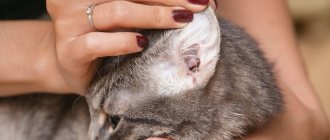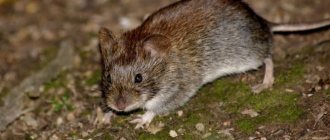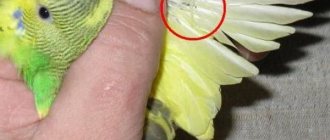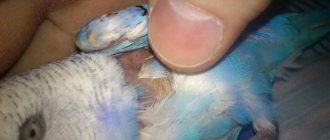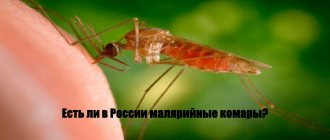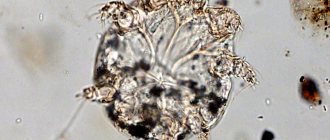Skin parasites that infect chickens and other poultry cause enormous damage to the farm. Infection with subcutaneous mites leads to a decrease in productivity in laying hens and weakens the immunity of birds. The most common disease caused by ectoparasites is knemidocoptic mange in chickens; its treatment will be more effective if started at an early stage. Every farmer should know how it manifests itself.
Description of the disease
Knemidocoptic mange is a parasitic disease caused by mites of the genus Knemidocoptes. They affect not only chickens, but also other types of birds - pheasants, turkeys, pigeons and even domestic parrots and canaries. In individuals with a strong immune system, the disease remains hidden for a long time. This is her cunning. In weakened birds, it can cause irreversible pathologies of the paws, cloaca and beak.
The incubation period lasts from 4 to 6 months, so it is almost never possible to detect the problem right away. Knemidocoptic mange is dangerous because mite waste products and toxins accumulate in the bird’s body. Microdamages in the skin left by mites are penetrated by pathogenic bacteria that can cause serious health problems.
Causes of parasitic infection
The disease is seasonal and flares up more often in warm weather. In winter, tick reproduction slows down. Infection of livestock is possible even if only one parasite enters the chicken coop. Subsequently, the mites multiply in the skin cells of the sick individual and are transmitted to other birds through bedding and equipment. Even a person can contribute to the spread of knemidocoptic mange in the household by introducing the parasite on shoes or clothing.
The main reasons for the development of the disease:
- dampness and poor ventilation in the chicken coop;
- neglect of cleaning and disinfection;
- dirty bedding;
- entry into the barn of rodents that carry ticks on their fur;
- direct contact with an infected bird.
Attention! Birds with weakened immune systems are at risk - these are young animals and chickens that have recently suffered from infectious diseases.
Pathogen information
Knemidocoptic mange is caused by mites belonging to the genus Knemidocoptes.
The parasites most commonly infecting chickens are mutans and gallinae. Pathogens differ from each other in size and body color.
Reference. The largest mites of the order Knemidocoptes barely reach a size of 0.5 mm. Females are usually larger than males.
Mites penetrate the skin of chickens on their legs and make passages in it using a gnawing type mouthparts. Their food consists of particles of the epidermis and fluid contained in the tissues. The female lays eggs directly inside the skin. This is where mites develop. In the warm season, the protonymph turns into an adult in 3–4 weeks. In winter, the process of going through all stages of transformation is extended over a long period. In birds infected with knemidocoptic mange in the fall, symptoms of the disease almost do not appear, since the reproduction and development of parasites is suspended.
In the course of their activity, mites infect an increasingly larger area of skin. If left untreated, the beak of sick individuals becomes deformed, ugly growths appear on the paws, and subsequently the joints become inflamed and even the phalanges of the fingers die.
Reference. Knemidocoptes mites do not pose a danger to humans; they do not live in human skin. In the external environment without food, parasites remain viable for up to 9 days.
Knemidocoptic mange of birds
The most well-proven and practically harmless means of combating knemidocoptosis include boric vaseline and the drug ASD-3 (Dogov's antiseptic stimulant, third fraction) used in veterinary medicine for external use.
Boric petroleum jelly is used for knemidocoptosis of the non-feathered parts of the bird's body and legs. Despite the fact that the tick lives in the skin layer, it still breathes atmospheric air. Boric Vaseline, applied to the affected area of the skin, clogs the openings of the entrances drilled by the mites, thereby depriving them of the ability to breathe. With regular (every 1-2 days) smearing of boron petroleum jelly on the affected areas, the mites in them die from lack of oxygen. To ensure complete destruction of ticks and their offspring, this procedure should be repeated two to three more times with an interval of three weeks.
The drug ASD-3 is not used in its pure form for the treatment of parrots. Usually it is diluted in vegetable oil (in a ratio of 5 parts vegetable oil and 1 part ASD-3). In appearance, ASD-3 resembles tar - just as black and oily, but with a more unpleasant odor. Diluted with vegetable oil, this drug can be successfully used to treat knemidocoptosis of the legs and body of birds. Application of ASD-3 to bare areas of the body, devoid of feathers, soothes itching, softens the existing crusts of frozen ichor and stimulates the growth of new feathers. In addition, vegetable oil has an effect similar to boric petroleum jelly, that is, it clogs the passages of ticks in the skin, thereby contributing to their death.
The intervals for treating poultry with this drug are the same as for boric vaseline. Re-lubrication must be carried out after two weeks in order to destroy the emerging juvenile mites, otherwise after some time the course of treatment will have to be repeated again.
It is necessary to disinfect the cage and equipment where the bird is kept. To do this, you can use any available disinfectant or boiling water. By the way, ticks die in a few seconds at a temperature of 75-80°C, and at room temperature they can live up to 2-3 months. Scabies mites are most active in the summer months; in winter, symptoms of scabies appear less frequently.
Quite often, in budgies, this mite infects the cere, the corners near the beak and the eyelids. When the disease is advanced, the area around the cloaca is also affected.
These places become like a sponge or gray-white foam, and externally the affected areas look quite specific: the wax and beak of birds lose their inherent color, become deformed and become covered with a network of cracks. When budgerigars are kept in groups, signs of this disease do not appear in all birds, but usually only in one or a few. Such birds should be placed separately, given a course of treatment, and the rest should be examined regularly (at least once a month). Good results in the prevention of this disease are obtained by regular disinfection of cages in all equipment. When the non-feathered areas of a bird's head are affected, good results are achieved with the use of the drug odelena, but the medications recommended above can also be used.
Literature
1. Akbaev M.Sh., Vasilevich F.I., Akbaev PM, etc. Workshop on the diagnosis of invasive animal diseases. - M.: KolosS, 2006. - 535 p.
2. Akbaev M.Sh., Vasilevich F.I., Akbaev R.M. and others. Textbook on parasitology and invasive diseases of animals. - M. ZholosS, 2008. - 776 p.
3. Akbaev PM Ectoparasites of poultry on the territory of industrial poultry farms in the Non-Chernozem Zone // Veterinary Medicine. — 2009. -№10. -WITH. 32-38.
4. Akbaev PM On the issue of the fauna of ectoparasites of birds in private poultry houses // Veterinary Medicine. - 2010. - No. 8. - P. 36-40.
5. Bogdanov I.I. use of birch tar in veterinary medicine. - Selkhozgiz, 1931. - pp. 76-79.
6. Gelsbergen T. Infectious diseases of birds. - Selkhozgiz, 1934. - 200 e..
7. Dubinin V.B. Fauna of the USSR. Arachnids. T. 6. Issue. 5. - M.-L., 1951, - P. 16-118.
8. Dubinin V.B. Fauna of the USSR. Arachnids. T. 6. Issue. 6. Part 2. - M.-L, 1953. - P. 3-167.
9. Esaulova N.V., Akbaev PM Knemidocoptosis of chickens and measures to combat it in private farms in the Kaluga region / Theory and practice of combating parasitic diseases: Mat. report All-Russian scientific conf. Society of Helminthologists named after K.I. Scriabin. - M„VIGIS. 2004. - pp. 151-153.
10. Litvishko N.T. Study of the morphology and biology of Knemidocoptes mutans, the causative agent of scabies in chickens: Abstract of thesis. dis…. Ph.D. biol. Sci. - Kharkov., 1950. - P. 3-8.
11. Makarevsky A.N. Diseases of domestic and indoor birds / External diseases and contagious diseases. - Kharkov, 1922. — P. 1-15.
12. Polyakov A.A., Uzakov UYa., Veselkin G.A. Veterinary entomology and arachnology: Handbook. - M.: Agropromizdat, 1990. - 237 p.
13. Potemkin V.I. Experiments in the treatment of chicken knemidocoptosis / Problems of veterinary dermatology, arachnology and entomology. - M.: 1 Ed. State Department of Internal Affairs and MBA, 1954. - pp. 72-75.
14. Svetlov P.G. On the different endurance to starvation and other harmful factors of male and female Drosophila / Report of the USSR Academy of Sciences. - L. 1943. - P. 354-357.
15. Shumilo R.P. Epizootological potential of parasitic arthropods of land birds of the MSSR. - Kyiv, 1981. - 33 p.
Symptoms of the disease in chickens
Knemidocoptic mange is difficult to detect at an early stage. After the tick penetrates the epidermis, pathological changes noticeable to the naked eye will appear within a few months. The farmer should be careful and inspect the hens as often as possible.
Chicken scabies usually begins in the spring, with the onset of warm weather. Infected individuals exhibit the following symptoms:
- decreased egg production;
- changes in the structure of the skin on the paws - its scales rise slightly;
- a white coating forms at the base of the beak;
- enlargement of the beak, its deformation;
- the bird is clearly worried - itching, it shifts from paw to paw and pecks its legs;
- lameness.
In the later stages of the disease, knemidocoptic mange is detected by characteristic changes in the shape of the beak and growths on the paws in the form of whitish bumps. For this reason, the disease is popularly called “calcareous foot.”
Signs of infection in birds
The early stages of knemidocoptosis are difficult to identify. Several months pass from the moment the ectoparasite penetrates the skin to the stage with pathological changes that can be detected upon visual examination.
Farm owners should inspect their livestock more often. Chicken scabies, as a rule, appear in the spring, when the sun warms up and it becomes warm. An infected bird is characterized by:
- decreased egg production;
- structural changes in the skin in the paw area;
- enlarged, deformed beak;
- the formation of a whitish coating at the base of the beak;
- anxiety: itching makes you move from foot to foot to peck off growths;
- lameness.
Late stages are identified by a changed beak shape, as well as whitish growths on the legs. Therefore, people dubbed the disease “lime foot.” The bird loses its feathers, it pecks at the inflamed areas until it bleeds.
Description of the stages of the disease
The clinical picture of knemidocoptosis depends on the stage of development of the disease. Let's look at them:
- Asymptomatic or hidden. It lasts about 4–6 months from the moment the tick penetrates the skin of the bird’s paws. During this period, the disease hardly manifests itself in any way, except that egg production rates in laying hens may decrease.
- Papular. The duration of this stage is 1–2 years. It is characterized by thickening of the surface layer of the skin. The epidermis becomes lumpy. A gray coating resembling lime forms on the paws. Now the bird is experiencing discomfort, which is manifested in its behavior - it limps, raises its leg, stomps on the spot, clenches its fingers.
- Rustic. The disease develops rapidly, and the condition of the infected chicken worsens. Growths on the limbs increase in size. The skin on them cracks, serous fluid oozes from inside. Inflammation is accompanied not only by itching, but also pain. At this stage of the disease, deformation of the beak is usually observed - it bends strongly downward and enlarges.
Attention! Knemidocoptic mange responds well to treatment if detected in a timely manner, when irreversible changes in the limbs and beak have not yet occurred. Lack of therapy leads to inflammation of the leg joints and tissue necrosis. Possible loss of fingers.
Causes of the disease and stages of its development
Mite larvae and adults fall onto the paws of chickens from sick chickens, through equipment and bedding in the room. The spread of the disease is facilitated by damp and dirty bedding in the chicken coop and poor ventilation. Reinfection of the entire flock is facilitated by roosters, who suffer from cnemidocoptic mange more often and more intensely than chickens.
Mites are able to live outside the body of a bird for 3-4 days, so they are successfully preserved on all surfaces touched by an infected chicken. Even the owner of the birds can become a source of infection, since the mite can live on his body and clothing.
Finding yourself in favorable conditions. The mite becomes active and begins to actively spread in the epidermis of the infected bird.
Symptoms of knemidocptosis depend on the stage of development of the disease:
- Asymptomatic . The duration of this stage, depending on the accompanying conditions, is from 4 months to six months. The mite burrows into the lower part of the chicken's leg, below the hock.
- Papular . Duration from one to two years. Small whitish-gray nodules, crusts and scales appear inside the scales of the chicken's paws. The surface of the paws becomes bumpy due to the thickening of the stratum corneum of the skin. The paws of chickens are covered with a gray coating, popularly called “lime foot”. At this stage, the bird begins to experience pain. She clenches and unclenches her paws and often stands on one leg. Limps when walking.
- Rustic . Thickenings on the paws become more and more pronounced. Paw deformation occurs. The scales begin to fall off, and keratotic fissures appear underneath them. From which serous-bloody fluid is secreted. The discharge dries on the surface of the paws and turns them brown. The chicken begins to experience severe inflammation of the joints, up to the loss of the phalanges of the legs.
Diagnostics
When the disease is asymptomatic, it can be diagnosed using laboratory tests.
If knemidocoptic mange is suspected, a piece of skin from the chicken's paws is taken for analysis. When the sample is magnified many times, the passages left by the mites are clearly visible on it. The skin acquires a porous structure. Also, under a microscope, it is possible to see the causative agents of the disease - ticks.
Effective treatments
Treatment of knemidocoptosis is carried out with the help of acaricidal drugs, which can be found for sale in a regular pharmacy or veterinary. Medicines are presented in the form of ointments, solutions and sprays. Folk remedies are also used in the fight against the disease.
Medication
We suggest first considering acaricides for preparing baths for chickens:
- Ectomin. The concentrate is sold in ampoules and liter bottles. It contains cypermethrin, a synthetic pyrethroid. To prepare the solution, dissolve 1 ml of emulsion in 1 liter of water.
- Trichlorometaphos. The drug destroys ticks at all stages of its development. The solution is prepared by adding 10 ml of the product to 1 liter of water. After thorough mixing, use as directed.
- Butox. The active ingredient is deltamethrin. Dilute the contents of the ampoule (1 ml) in 1.3 liters of water.
The listed products are used to prepare baths for sick chickens. The prepared solution is poured into the basin, having previously been heated to a temperature of +38 degrees. The bird is carefully taken by the body, holding the wings, and lowered with its paws into the medicinal composition. Exposure time – 1 minute. To consolidate the result, it is recommended to carry out 3 treatments with an interval of 10 days.
Other remedies against ectoparasites:
- Frontline. The drug is available in the form of a spray. It is convenient to spray it on the affected areas of the skin. Paws are treated 2-3 times every 7-10 days.
- Aversectin ointment. Apply to mite-affected areas once every 2 days using a cotton swab.
- Gel Akarin. Designed to lubricate the skin when infected with various types of mites, including the genus Knemidocoptes.
- Mara garden. An oily suspension that has not only acaricidal, but also disinfecting and regenerating effects. Skin treatment should be carried out three times every 7 days.
Attention! It is important to follow the recommendations from the instructions for the drugs. Do not interrupt the course of treatment ahead of time. Already after the first treatment, the condition of the birds’ skin improves, and dead scales fall off. After the second procedure, the surface of the paws becomes smoother, but this is not a reason to refuse the third treatment.
Folk remedies for growths on the feet of birds
Among folk remedies in the fight against subcutaneous mites, birch tar is effective. It is mixed with a small amount of kerosene and lubricated on the paws of laying hens. You can use the product obtained from birch bark in its pure form. It envelops the skin with a thin film, which blocks the access of oxygen to the tissues, as a result of which the mites die.
If there is no tar at hand, treatment of knemidocoptosis is carried out using iodine mixed with glycerin in equal parts. Using a cotton swab or swab, the product is applied to the affected areas of the epidermis. Treatment frequency: 1 time every 7 days.
Another effective remedy that our grandmothers used was solid oil. A tablespoon of the substance is diluted in 150 ml of vegetable oil. The inconvenience of use lies in the need to lubricate the birds’ paws 2 times a day for 2 weeks.
Diagnosis and treatment
The cause of the disease is determined based on a clinical examination and assessment of housing and feeding conditions. In chickens, an indicator of the onset of a mass disease is the occurrence of clinical symptoms in roosters. Excess males are culled. The remaining birds are treated by dipping their paws into baths with insectoacaricidal emulsions of Creolin, Entomazan or another insectoacaricide. The duration of treatment and intervals between treatments are indicated in the instructions for use of the drug.
At the same time, the chicken coop is disinfested. They evaluate the maintenance parameters and bring them into compliance with zoohygienic standards.
For feeding, complete factory-made compound feed is used or a balanced feed mixture is made from BVMK and grain. Birds at the stage of lobar inflammation are discarded.
If the paws and cere of a parrot are damaged, the cells are disinfected. Damaged surfaces are treated with Aversectin ointment.
To stimulate the body's defenses, instead of drinking, the bird is given the following drugs:
- Gamavit: the medicinal solution should be changed every 3–4 hours; liquid that has changed color should not be allowed to be drunk;
- Mauser tropfen: change water twice a day;
- Vita-Sol 8in1 UltraVite.
The poultry is switched to high-quality, expensive feed.
Disease prevention
Immediately after completion of treatment, the chicken coop should be treated. The litter is taken out and burned outside the site. The floor and walls are cleaned of dirt and covered with a layer of lime. Poultry farmers recommend burning all equipment with a blowtorch to ensure that all parasites are destroyed.
Prevention of infection of chickens with knemidocoptic mange includes the following measures:
- maintaining cleanliness in the poultry house;
- regular replacement of litter and renewal of its top layer;
- installation of a sand-ash bath indoors;
- equipping the chicken coop with a ventilation system;
- regular examination of birds' paws for changes in skin color and structure;
- limiting contact between domestic birds and wild birds.
Knemidocoptic mange in chickens is easily treated if detected in a timely manner. However, its early diagnosis is difficult because in the first 4–6 months after infection the disease hardly manifests itself. At the slightest suspicion of an ectoparasite attack, you should contact a veterinarian for a diagnosis. Treatment of knemidocoptosis is low-cost and short-lived, so do not put it off until later.


